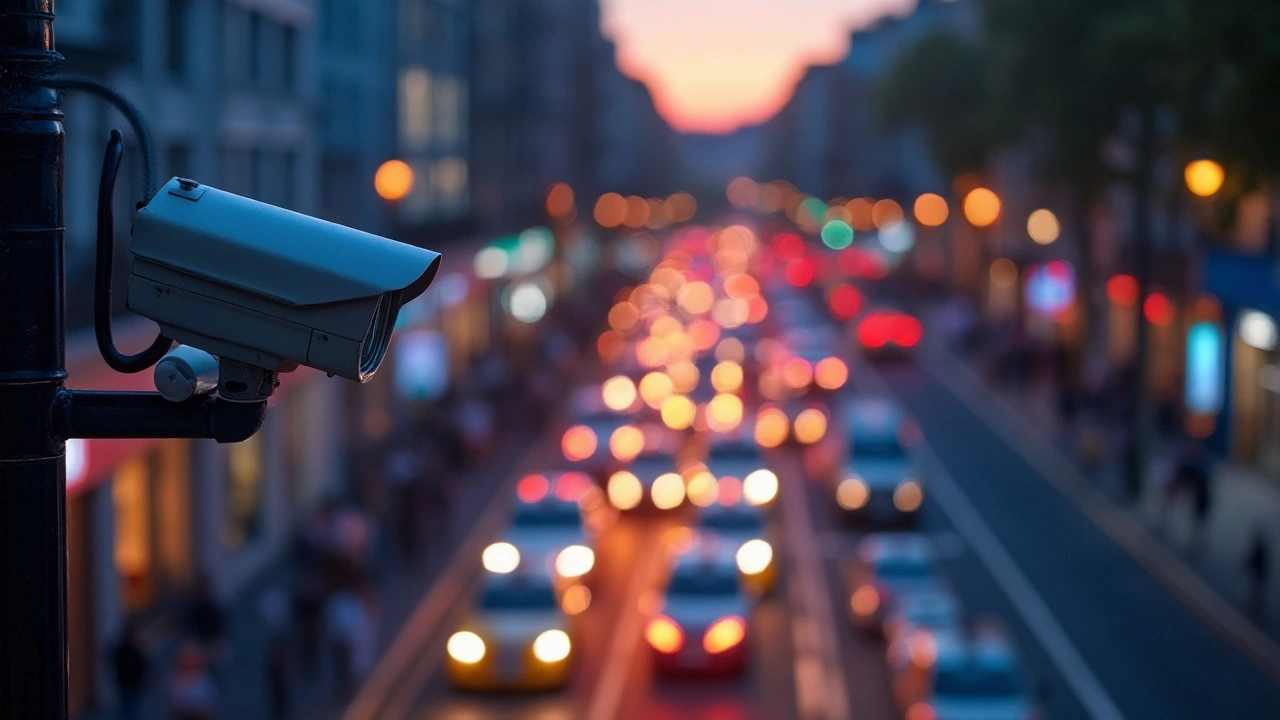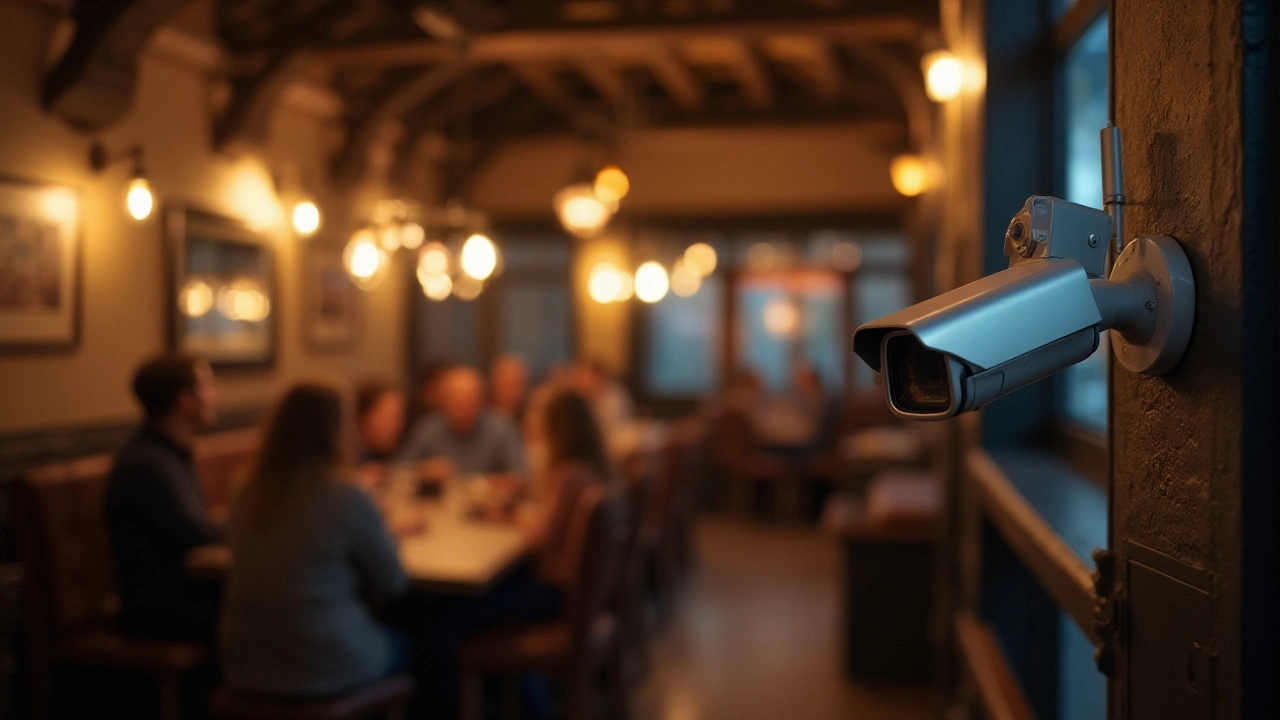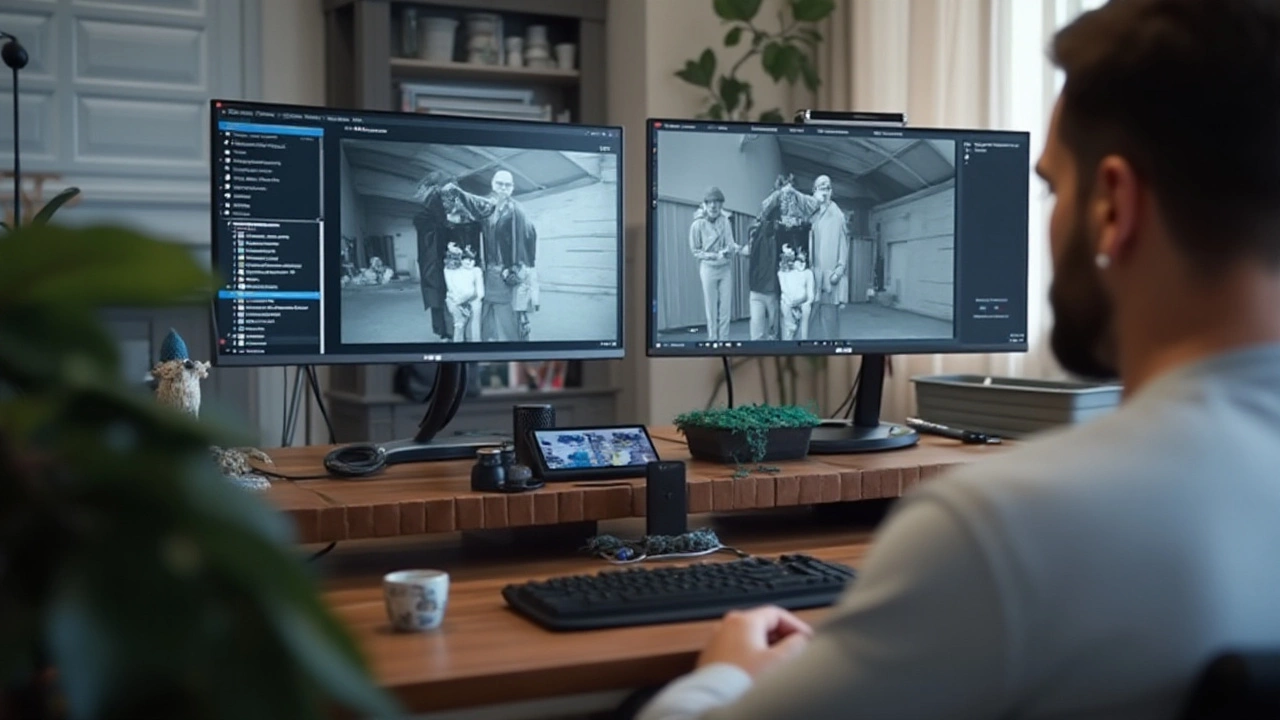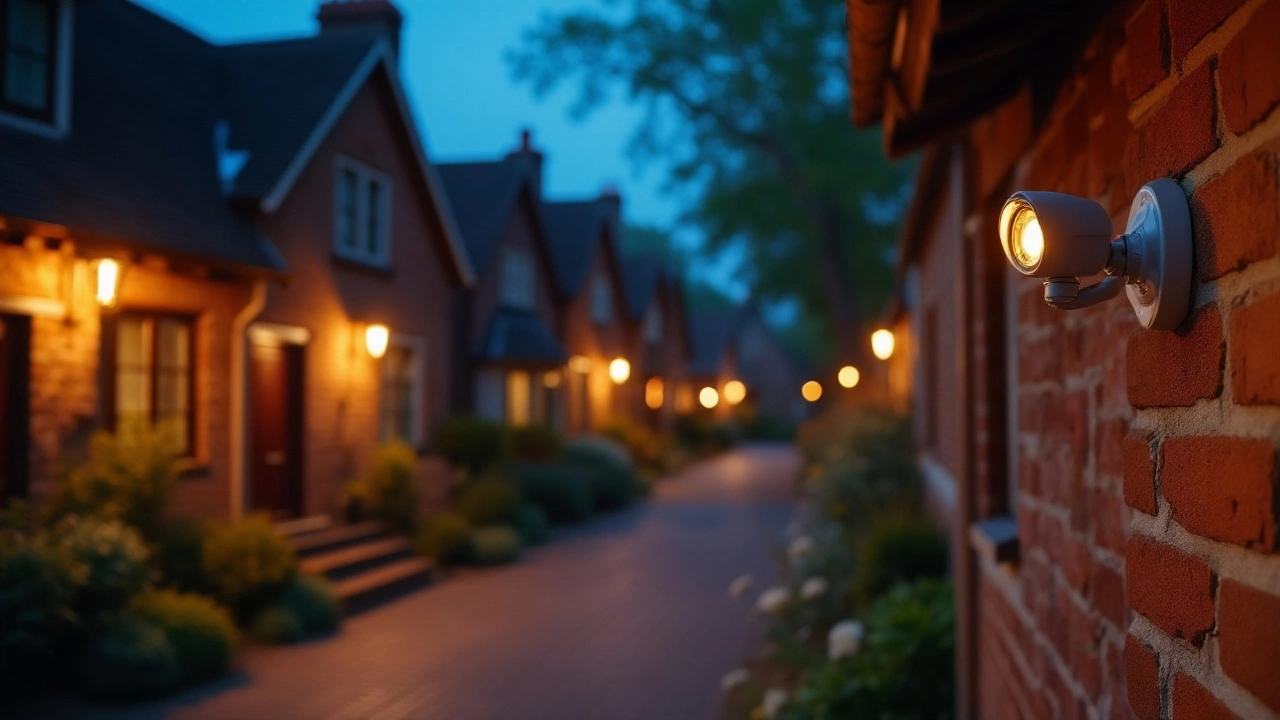Diving into the world of surveillance cameras unveils a realm of technical wonders, especially when exploring the concept of night vision. While it might be tempting to believe that every security camera can pierce through the darkness with precision, the truth is a bit more varied. Not every camera on the market is designed to provide a clear view when the lights go off. This revelation might surprise those who have considered all surveillance tech as night vision-equipped by default.
However, modern advancements have made night vision a common but not universal feature. Some cameras are armed with infrared LEDs that paint the night in a monochrome canvas, revealing details shrouded in darkness. Others might rely on specialized low-light sensors that offer color vision even under dim lighting conditions. Exploring these technologies can illuminate the path to selecting the right camera for anyone's specific needs.
- Understanding Night Vision Technology
- Types of Night Vision in Cameras
- Advantages of Night Vision Cameras
- Choosing the Right Camera for Your Needs
Understanding Night Vision Technology
When you delve into the mechanics behind the mystical ability of cameras to see in the dark, it opens up a fascinating array of technological wonders. Night vision technology, often perceived as a modern marvel, actually dates back to World War II. Its original conception was for military purposes, allowing soldiers to maneuver under the cover of night. Today, this technology has transitioned into the civilian world, making it possible for surveillance cameras to monitor areas 24/7, regardless of the lighting conditions.
The magic behind night vision cameras primarily lies in their ability to utilize infrared light. Infrared light is invisible to the naked eye, but the cameras can detect and utilize it to create imagery under low-light conditions. Infrared night vision cameras are equipped with LED lights that emit infrared light, which reflects off objects and returns to the camera sensor, painting a black-and-white image of the surroundings. This technique is known as active IR illumination. Security cameras that incorporate this method are often used in environments where it is necessary to maintain complete darkness while still capturing clear visuals.
Another intriguing technology used in categorizing certain night vision cameras is low-light photography or the low lux camera. These cameras don't use infrared light, but instead are designed to be extremely sensitive to ambient light, allowing them to produce color images in very low-light conditions. This capability is ideal for areas where small amounts of light are present, allowing for more detailed and colorful imagery than traditional infrared night vision can provide.
According to a report by Security Today, "The development of low-light sensors in security cameras has been a game-changer, offering vibrant images where infrared fails to distinguish colors."
An often overlooked aspect of night vision capability is the image sensor size and quality. Larger sensors with more sophisticated technology can capture more light, thereby improving image clarity. Take, for instance, cameras equipped with CMOS sensors; they offer higher resolution and better image quality under low light compared to their CCD counterparts. In the ever-evolving surveillance camera market, innovation continues to drive forward capabilities, enhancing not just night vision, but the camera's overall performance day and night.

Types of Night Vision in Cameras
When exploring the wide array of night vision cameras, it's important to recognize that not all employ the same technology. One of the most prevalent forms is infrared (IR) night vision, which might sound familiar due to its widespread application in various security systems. These cameras rely on infrared LEDs, arranged around the camera lens, to illuminate the surrounding area with light invisible to the human eye. This technology captures black-and-white images, revealing the nocturnal world with clarity. The number and quality of these LEDs can significantly influence image sharpness and distance. Some top-tier models boast a range exceeding 100 feet, ensuring no shadow goes unchecked.
A fascinating aspect of this technology is night vision's scalability. Traditional IR cameras can sometimes struggle in absolute darkness, where 'zero-lux' conditions exist. It's here that modern advancements, like Full-Color Night Vision, come into play. These innovative devices use cutting-edge sensors that amplify any available light, moonlit or ambient, to provide high-definition, full-color images even when the sun has long retired. Such cameras are indispensable for tasks where color data might be crucial for identification or analysis. In some models, a combination of low-light sensitivity and digital enhancement algorithms offers a seamless transition from daylight to night-time operation.
Thermal imaging is another remarkable form of night vision that diverges from the first two, capturing heat patterns instead of relying on light. This approach is less common in mainstream surveillance due to its higher cost, but it's invaluable in military and specialized security applications. Thermal cameras can pick up on the heat emitted by objects, animals, or people, displaying them distinctively against cooler backgrounds. They are particularly useful in adverse weather conditions where traditional cameras might falter.
Security expert Leo Marks once noted, "Thermal cameras are the eyes that see where others are blind," emphasizing their unmatched capability.For those looking to fortify their surveillance with the latest in thermal technology, it's an investment that pays in unparalleled night-time visibility.
Exploring these night vision technologies unveils a world where mere visibility transforms into enhanced perception. Be it IR night vision adapting to pitch-black environments, Full-Color sensors maintaining the vibrancy of the day, or thermal cameras cutting through nature’s formidable elements—each offers unique advantages. Understanding these types can empower anyone to make informed decisions based on their specific security requirements, whether for home, business, or beyond. Combining different technologies may offer the most comprehensive coverage, ensuring no moment slips by unnoticed after dark.

Advantages of Night Vision Cameras
When it comes to security, having the ability to see clearly at night is a game-changer. Night vision cameras provide a myriad of benefits that are crucial for effective surveillance. The primary advantage is the ability to monitor spaces in complete darkness, which is essential for thwarting potential crimes before they even have a chance to unfold. Imagine a bustling city street or a quiet suburban backyard—all under constant watch, no matter the time of day. This assurance is made possible because these cameras use infrared technology that can detect movement even when there's no visible light to assist.
Another significant benefit is the deterrent effect. The sheer presence of a camera that is known to have night vision capabilities can often be enough to dissuade criminal activity. When malicious actors know their every move could be captured in startling clarity, they might think twice before attempting a break-in or vandalism. Many home and business owners report seeing a drop in unwanted incidents after installing such cameras. This guarding eye, although not alive, seems to have a presence of its own, casting a watchful gaze that patrols the night.
Surveillance technology with night vision also provides peace of mind to property owners, knowing their premises are protected without the need for additional lighting systems that could increase electricity bills or light pollution. The low maintenance nature of these cameras is a selling point for many. In terms of quality, many users are often surprised by the capabilities of modern night vision cameras which can often display images that are clear and full of detail, rivaling professional-grade movie equipment. A quote from a recent FBI study emphasizes this:
"Surveillance systems have become instrumental in solving crimes and often serve as vital evidence in spotting and apprehending offenders."
Further examining their capabilities, night vision cameras are now smarter than ever. Many models integrate artificial intelligence to filter through noise or other distractions, ensuring only the most relevant footage is stored or flagged for action. This means a bird flapping its wings might be ignored, but a person lurking in the shadows won't go unnoticed. Often outfitted with motion sensors, these cameras can alert you in real-time to incidents as they happen, allowing for immediate response. For those who might be often away from their premises, this is a particularly useful feature.
Lastly, when weighed against the potential loss from break-ins or property damage, investing in night vision cameras can be seen as a prudent financial decision. The upfront cost is typically outweighed by the security it provides and the potential expense of dealing with a burglary. Knowing that incidents are less likely to happen, or can be swiftly dealt with if they do, creates a safer environment for everyone involved.

Choosing the Right Camera for Your Needs
Embarking on the journey to select a security camera that perfectly fits your needs can feel a bit like navigating a technological labyrinth. With the extensive variety of devices available, each boasting its own unique set of features, understanding what aligns best with your specific circumstances is crucial. Begin by weighing the purpose of installation—are you looking to monitor a dimly lit backyard, or perhaps keep an eye on a well-lit office environment? The ambient light condition plays a significant role in determining the type of night vision cameras you might need. Cameras equipped with infrared (IR) night vision will excel in complete darkness, making them ideal for spaces without any light source. Alternatively, low-light cameras that rely on a special sensor to provide full-color images in near-dark could be well-suited for areas that receive some ambient light at night.
Equally critical is the resolution, a factor that significantly influences the quality of footage you receive. High-definition cameras can capture crisp details, making them indispensable for identifying faces or distinguishing features during nighttime surveillance. Investing in a camera with at least 1080p resolution is often recommended. Some advanced models even offer 4K resolution, although these can be pricier and demand more storage capacity. A tip for potential buyers—when selecting a camera, make sure to consider the field of view. A wider angle can reduce blind spots but may compromise image clarity at greater distances. In contrast, narrower views are great for focusing on specific entry points. An insightful piece of advice from The Security Institute emphasizes,
“Understanding your environment's specific security needs will lead you to the most suitable camera choice.”
Beyond resolution and field of view, don't overlook the importance of connectivity. Wireless cameras offer flexibility and ease of installation, but they require a reliable Wi-Fi network. Wired systems, while more complex to install, can offer stable, interference-free transmissions. Assess each camera based on features like motion detection alerts, cloud storage capabilities, and even AI-powered interfaces that distinguish between human and non-human movement. Budget considerations are, of course, pivotal. Establishing a price range beforehand can help you avoid feature fatigue—getting swayed by an array of amenities that jack up costs without delivering proportional benefits.
Lastly, consider durability and outdoor capabilities if the camera is for external use. Look for devices with a good IP (Ingress Protection) rating; cameras with IP66 and above are typically waterproof and dustproof, hence more suited to challenging weather conditions. Some cameras even offer two-in-one solutions, featuring built-in lights activated by motion to both illuminate subjects and deter potential intruders, enhancing both recording quality and security. By understanding these elements, purchasing a surveillance camera shifts from daunting to a more manageable task, ensuring peace of mind no matter where you decide to station your lens.

